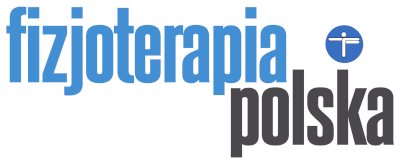Kamil Szcześniak, Iwona Sarna, Anna Mierzyńska, Rafał Dąbrowski, Edyta Smolis-Bąk
Kamil Szcześniak, Iwona Sarna, Anna Mierzyńska, Rafał Dąbrowski, Edyta Smolis-Bąk– The application of console games – exergames in cardiac rehabilitation: a pilot study. Fizjoterapia Polska 2023; 23(4); 182-191
DOI: https://doi.org/10.56984/8ZG20AR1N
Santrauka
Įvadas. Per daug žmonių vengia reguliaraus fizinio aktyvumo, todėl įgyvendinamos įvairios strategijos, skirtos padidinti jų motyvaciją. Per pastaruosius metus populiarėja žaisti konsoliniais žaidimais, t.y. eksžaidimais, sportuojant.
Medžiaga ir metodai. Tyrimas apėmė pacientus, kurie buvo nukreipti į ankstyvą po ligoninės stacionarinį reabilitaciją. Visi subjektai dalyvavo ištvermės treniruotėse ant dviračio ergometruose ir fizinėse treniruotėse (dinaminėse, tempimo, koordinacijos, balanso) su pasipriešinimo treniravimo elementais 5 kartus per savaitę. Tyrimo grupėje reabilitacijos programa buvo papildyta treniruotėmis su ActivLife įranga. Treniruotės vyko kasdien, 5 kartus per savaitę. Jos apėmė treniruočių programą, kuri susideda iš 7 pratimų, skirtų vystyti judesio gebėjimus: koordinaciją, jėgą ir balansą, o tai atliekama veiklomis, panašiomis į tradicinius pratimus – kėliniai, šoninė lenkimas, viršutinių galūnių trimatės judesio ir kūno lenkimas sagitaliniame plane. Treniruotės truko nuo 15 iki 20 minučių.
Rezultatai. Po reabilitacijos pastebimas reikšmingas pakankamumo pagerėjimas abiejose grupėse šiuose testuose: 6MWT [m] – tyrimo grupė: 369 vs 426, p <0,05, kontrolinė grupė: 341 vs 434, p <0,001; apatinių galūnių raumenų jėgos testas [kartai per 30 s]: tyrimo grupė: 11,4 vs 13,6, p <0,001, kontrolinė grupė: 9,9 vs 13,1, p <0,001, ir Up&Go testas [s]: tyrimo grupė 7,8 vs 6,7, p <0,01, kontrolinė grupė 8,4 vs 7,3, p <0,01.
Išvados. Širdies ligoniams interaktyvūs konsoliniai žaidimai yra vertinami kaip patraukli, saugi ir naudinga fizinio aktyvumo forma. Treniruotės naudojant ActivLife įrangą pasirodė tokios pat veiksmingos kaip ir tradicinės treniruotės.
Raktažodžiai:
eksžaidimai, širdies reabilitacija, kardiologija, fizioterapija, mankšta

